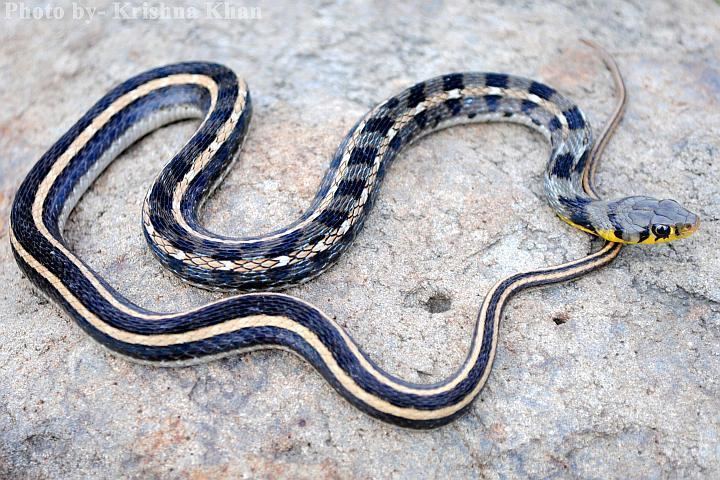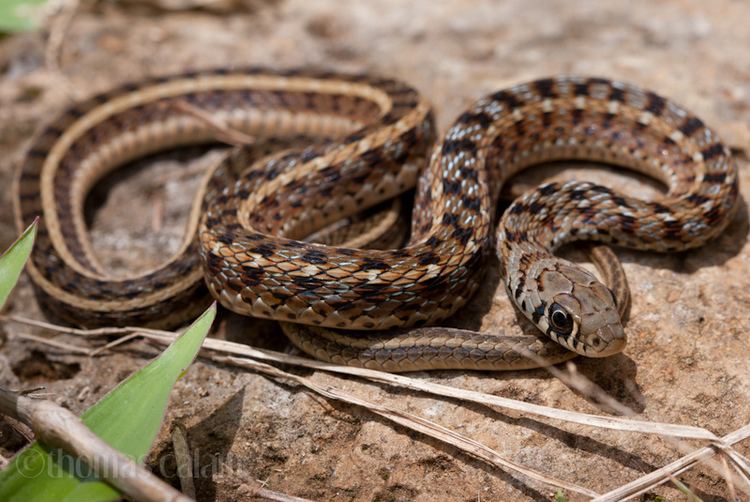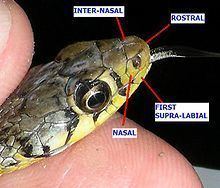Scientific name Amphiesma stolatum | Genus Amphiesma Higher classification Amphiesma | |
 | ||
Similar Amphiesma, snake, Checkered keelback, Reptile, Colubridae | ||
Snake buff striped keelback amphiesma stolatum
The buff striped keelback (Amphiesma stolatum) is a species of nonvenomous colubrid snake found across Asia. It is the sole species of genus Amphiesma. It is a typically nonaggressive snake that feeds on frogs and toads. It belongs to the subfamily Natricinae, and is closely related to water snakes and grass snakes. It resembles an Asian version of the American garter snake. It is quite a common snake but is rarely seen.
Contents
- Snake buff striped keelback amphiesma stolatum
- Buff Striped Keelback Amphiesma Stolatum Non Venomous Snake Information in hindi
- Anatomy and morphology
- Morphs
- Identifying characteristics
- Size
- Distribution
- Conservation status
- Habitat
- Feeding ecology
- Life history
- Behavior
- Local names
- References

Buff Striped Keelback | Amphiesma Stolatum | Non Venomous Snake Information in hindi
Anatomy and morphology

A small, slender snake, the buff striped keelback is generally olive-brown to gray in colour. The head and the body are of the same colour.

The body of the buff striped keelback is short, and it has a long slender tail which is almost a quarter of its length. Two yellow stripes along the length and to the sides of the spine are the distinctive feature of this snake. These stripes are diffuse at the head and are especially bright on the second half of its body.

The keelback has irregular blackish crossbars on the body. Near the head the crossbars are prominent, whereas on the second half of the snake they become diffuse.

The sides of the head are yellow, and the head tapers to form a distinctive neck. The nape is red during the breeding season. The chin and throats are white or sometimes orange. There are black vertical markings in front of and behind the large eyes. The eyes have large round pupils with golden flecks on the iris. The forked tongue is black.
The underside is pale cream and has small black spots scattered along both the margins.
It has Keeled scales on the dorsal surface of the body.
Morphs

There are two distinct colour varieties – a typical variety, found everywhere, with grayish-blue interscale colour. The second variety, erythrostictus, is common mainly in coastal areas and has bright vermillion interscale colour. The interscale colours become visible only when the snake puffs itself up when agitated.
Identifying characteristics
- The nasal shield does not touch the second supralabial (upper lip shield).
- The rostral touches a total of 6 shields. These are two inter-nasals, two nasals and the first supralabial on each side.
- Presence of single temporal shield.
- Nineteen rows of costals which are strongly keeled except for the outer row which is perfectly smooth.
- Presence of stripes.
- Ventrals 125-161.
- Anal divided.
- Subcaudals 50-85.
Size
The Buff Striped keelback is usually 40 to 50 cm (about 16 to 20 inches) in total length. The maximum length recorded is 90 cm (35 3⁄8 in). Females are consistently longer than the males which only rarely reach 620 mm (2.03 ft) in length.
Distribution
The buff striped keelback is found throughout South and Southeast Asia. Its range extends from Pakistan (Sindh) to Sri Lanka, Philippines, India (including the Andaman Islands), Bangladesh, Nepal, Myanmar, Thailand, Laos, Cambodia, Vietnam, Indonesia (Borneo, Sabah), Taiwan and China (Hainan, Hong Kong, Fujian, Jiangxi).
In India, the snake is found up to an altitude of 2,000 feet (610 m).
Conservation status
The buff striped keelback is common throughout its range, and is not of international conservation concern.
Habitat
This terrestrial, diurnal snake inhabits well-watered lowland plains and hills
Feeding ecology
The primary diet of adult A. stolatum is small amphibians such as frogs and toads, but they are also known to consume fish, earthworms and geckos.
Life history
Keelbacks are oviparous. Mating is thought to take place during the aestivation period. Gravid females have been found from April to August and eggs are laid in underground holes from May to September. The snake lays a clutch of 5 to 10 pure white eggs. Females remain with eggs till they hatch. The young snakes are 13 to 17 cm at birth and eat small frogs, tadpoles, fish, earthworms and insects.
Behavior
The buff striped keelback is diurnal, and although mostly seen on land, it can readily take to water. It has long rear teeth for catching frogs and toads.
The buff striped keelback is nonvenomous and totally harmless. When alarmed, it inflates its body causing the bright interscale colours to be exposed. Sometimes, the snake flattens and narrows its head to form a hood. This behaviour sometimes causes the species to be mistaken by laypersons for a baby cobra.
The snake aestivates during hot weather and appears at the end of summer. It is abundant during the rains. In north India, the striped keelback hibernates 25 to 45 cm (about 10 to 18 inches) under the ground in soil, amongst grass roots.
